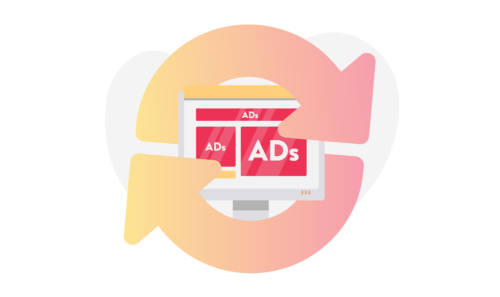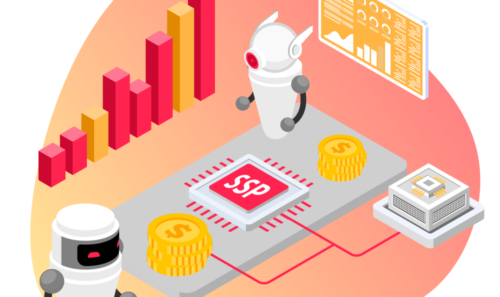The Valuation of Programmatic Inventory: Pricing in GAM
The concept of “pricing” in the Digital Advertising industry is important because it relates to the proper pricing of advertising space; depending, that is, on the given sales channel. At a time when there has been a significant increase in traffic due to the lockdown, pricing has become much more important than auction models.
This change has made Publishers even more aware of the importance of setting bids properly on the guaranteed sales level, as well as on either higher priorities or on the unguaranteed part of the traffic – especially in Open Auction. Well-set rates at each level will mean that all sales will perform well, with Programmatic and Direct Sales complementing each other.
Emissions within a Programmatic guaranteed model
When it comes to Direct Sales, it includes Line Items: Sponsorship and Standard. Sponsorship display ads are based on the specific percentage of impressions; as well as the start and end times. Whereas Standard serves ads based on a specific target number of impressions, as well as start and end times. However, it is crucial that each of the Line Items, regardless of the type, has a correctly defined rate:

The set rate should correspond to the actual cost negotiated with the buyer (CPM or CPD). Why is this important? Because it allows you to have precise knowledge at all times about what revenues are being generated by a given domain; and thus whether the selling price is correct, e.g. whether it is too low for the priority of the emission.
Therefore, the above-mentioned data is needed not only by analysis departments but, above all, by people managing the business; who as a consequence will be able to make the right strategic decisions. The added value of sticking to this principle is that we have all the correct data in one place.
Furthermore, in the case of these emissions, it is important to avoid setting up campaigns with a rate of “0” – self-promotional campaigns. Due to the fact that these Line Item types have a higher priority of emissions than others, it is a pure loss of revenue. Sometimes there may be campaigns that, for business reasons, must be broadcast at a high priority without generating revenue – but it must be a very conscious action.
Programmatic Guaranteed vs. Preferred Deals

One of the Programmatic demands which is classified as guaranteed, is Preferred Deal. It is another type of Line Item. Therefore, it has a fixed priority value that will win over Open Auction and all other Line Items except Sponsorship and Standard. In this case, the key is to set the rate at the level that has been negotiated with the Buyer – it should be remembered that the level of this rate should be significantly higher than the rate that can be achieved in the Open Auction. Indeed, there may also be exceptions here. Usually they are justified only by business interests, but from the point of view of the ad server settings, they would be not optimal in terms of income.
Recently, a Programmatic direct sales channel called Programmatic Guaranteed has also appeared on the horizon – it should be set depending on the sales model or as a Standard, with prio 6-10 (for the CPM model) or for Sponsorship (for the CPD model). All the above-described rules for setting the rate also apply in this regard.
Emission within a Programmatic non-guaranteed model
Non-guaranteed demand is realized by the following types of Line Items: Network, Bulk, price priority and, of course, as a part of auctions, Ad Exchange and AdSense. All these types work under priority 12. Network displays ads based on a certain percentage of impressions, whereas Bulk displays ads based on a specific target number of impressions (due to the fact that emissions are not guaranteed, the target number of impressions should be treated rather as an impression limit), Price Priority, displays ads primarily on the basis of price, with optional daily or general impression caps.
The last three mentioned types of Line Items should also have set rates according to what a given Publisher can actually bring (the rate should be as close as possible to what the campaigns achieve by the eCPM of the ad sold). We must remember that emissions within a Programmatic non-guaranteed model can compete with each other in the so-called Dynamic Allocation, a process that maximizes the Publisher’s profit by competing in terms of CPM between different sources of demand. So the correctness of the rate setting in the above-mentioned Line Items is crucial so as to ensure the most effective monetization, whilst taking into account the auction demand such as Ad Exchange. We can imagine a situation where we reach $ 1 on a given space in an Ad Exchange open auction, and we have a Line Item set with a price priority campaign with a bid of $ 1.5, ultimately bringing the Publisher a revenue stream of $ 0.9. In this situation, the impression goes to this campaign with the set rate of $ 1.5, so the Publisher is actually losing $ 0.1 per 1000 impressions.
Pricing of the inventory inside the auction
On the other hand, a separate topic is the pricing of the inventory within the auction – here we are mainly talking about the Ad Exchange demand. However, we must remember that the introduction of the First Price auction at the end of September 2019 resulted in a change in the functioning of the pricing rules, which previously only applied to the Open Auction. Namely, the “first price” pricing rules – currently the Unified Pricing Rules, apply not only to the Open Auction, but to the the entire non-guaranteed priority – excluding campaigns with “0” rate and Housing campaigns (priority 16).

Here we come to the point where it should be understood that the valuation of a Programmatic inventory and the good management of floor prices (in the auction we operate mainly with the minimum price mechanism) is a process based on a very in-depth analysis of multidimensional data, both current and historical. Additionally, in this process, it is very important to respond to the current demand and changes on the Publishers’ websites. It should be remembered that setting the minimum prices too low may lead to the devaluation of the inventory in the long term, and too high a floor price may result in “cutting” part of the demand both in the Ad Exchange environment itself and in other campaigns in Ad Server on non-guaranteed Line Items.
Solutions for Publishers
At Yieldbird, we have managed to meet these market expectations and developed a tool for managing price rules – PriceGenius.
PriceGenius is a machine-learning solution for Unified Pricing Rules management, which maximizes revenue and protects inventory from bid-shading devaluation, whilst saving you both time and resources. It constantly monitors the most important price-affecting variables, and automatically adjusts the rates to the optimal level in a fully automated way.







